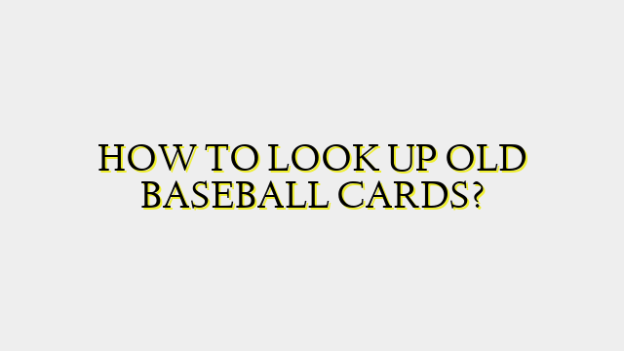When collecting Topps baseball cards, there are several key things you will want to look for to determine the value and significance of individual cards. Topps has been producing baseball cards since 1951 and they represent the most iconic brand in the industry. Over the decades, they have featured some of the greatest players of all time and captured amazing moments from throughout MLB history.
Some of the first things to examine on any Topps baseball card are the year and series information. Topps releases new sets each year and often divides them into Series 1, Series 2, and sometimes additional series. The year gives you an idea of what players were active at that time and also hints at the age and potential condition issues of the card. More vintage cards from the 1950s-1980s will generally be worth more than modern issues from the 2000s and 2010s.
It’s also important to check the card number, as certain numbers can be more valuable than others. For example, the very first card in the set (#1) or the last card (#XXX) may have additional significance. Some players like Mickey Mantle also tended to receive favorable low card numbers, like #7 or #8, which collectors prefer. Look out for specially designated parallels, short prints, or serially numbered cards that were produced in limited quantities.
Perhaps most importantly, inspect the image on the front of the card closely. Desired players will impact value greatly. All-time greats like Babe Ruth, Ted Williams, Willie Mays, and more are usually the most valuable subjects due to their iconic status. Other top premium players include Hank Aaron, Roberto Clemente, Nolan Ryan, and current stars Mike Trout, Clayton Kershaw, etc. Beyond the player, certain types of photos are preferred—action shots from important games tend to be favorites. Autographs or memorabilia cards with signed swatches exponentially increase worth as well.
On the back, check for biographical information and statistics from that season. The earlier and more detailed the write-up, generally the better. Also, be sure to examine every corner, edge, and surface closely under good lighting to assess the condition or grade. Near-perfect, well-centered cards in amazing shape labeled Mint will demand huge price premiums over those with any flaws, wear or damage designated as Poor. Pristine vintage Topps can sell for thousands in high grades, versus just a few dollars in ratty condition even for all-time greats.
After considering all of these vital card fronts and backs details, research the specific player/year/card number online through price guide references to get an accurate value range matched to the proper condition grade assigned. Sites like BaseballCardPedia.com can help provide historical production and insert information too. With Topps, condition is king, along with subjects, selective serial numbers, and the alluring blend of blend nostalgia and history infused in these pieces of artistic sports collectibles pop culture.
Proper long-term care and preservation methods will also aid in maximizing an individual card’s potential worth over decades. Safe storage in protectivemagnetic or screwdown holders within sturdy boxes or binders away from light, heat and moisture goes far. Lastly, the tightly-knit community of excited collectors pushing demand and recent nostalgia booms impacting iconic old sets means that the right Topps cards from favored eras will never lose their enduring desirability and significance within the engaging hobby. With care and guidance, your personal Topps baseball rainbow collection can be the stuff of childhood memories revisited through decades.

